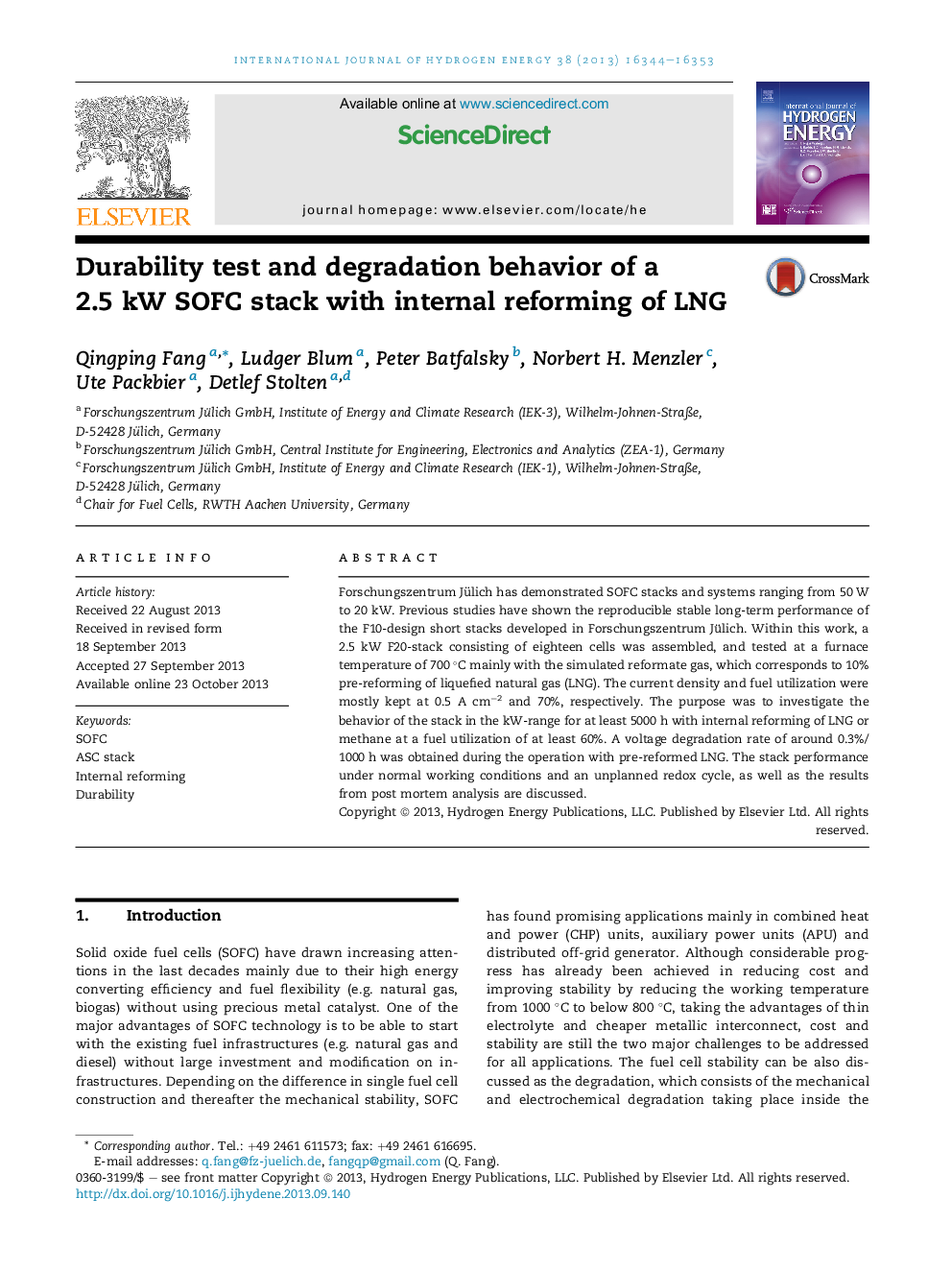| Article ID | Journal | Published Year | Pages | File Type |
|---|---|---|---|---|
| 1274197 | International Journal of Hydrogen Energy | 2013 | 10 Pages |
•A 2.5 kW F20-design stack was operated with internal reforming of LNG.•The stack showed low degradation rate under stationary operating mode.•The stack components showed no special features from internal reforming.•Influence of redox process depends on the initial status of the cell.
Forschungszentrum Jülich has demonstrated SOFC stacks and systems ranging from 50 W to 20 kW. Previous studies have shown the reproducible stable long-term performance of the F10-design short stacks developed in Forschungszentrum Jülich. Within this work, a 2.5 kW F20-stack consisting of eighteen cells was assembled, and tested at a furnace temperature of 700 °C mainly with the simulated reformate gas, which corresponds to 10% pre-reforming of liquefied natural gas (LNG). The current density and fuel utilization were mostly kept at 0.5 A cm−2 and 70%, respectively. The purpose was to investigate the behavior of the stack in the kW-range for at least 5000 h with internal reforming of LNG or methane at a fuel utilization of at least 60%. A voltage degradation rate of around 0.3%/1000 h was obtained during the operation with pre-reformed LNG. The stack performance under normal working conditions and an unplanned redox cycle, as well as the results from post mortem analysis are discussed.
